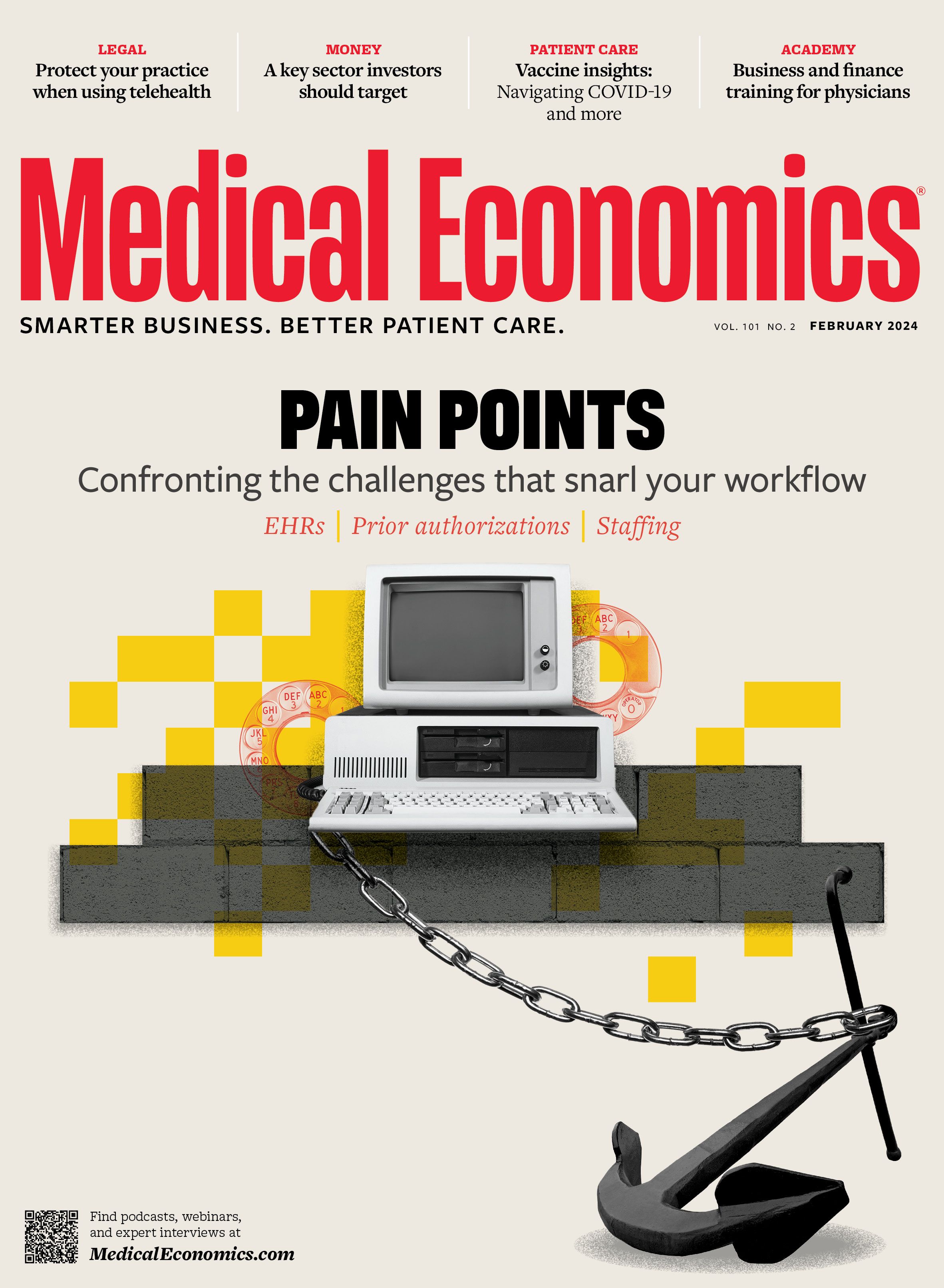Blog
Article
Medical Economics Journal
Telehealth tips: Safeguarding your medical practice
Author(s):
Is your practice following proper protocols when it comes to telehealth?
Telehealth tips: ©Elnur - stock.adobe.com

The COVID-19 pandemic brought a dramatic expansion to the scope and frequency of clinicians’ use of telehealth — but remote examination and communication are not recent phenomena. Hippocrates allegedly examined the clothing of patients, brought by messengers from distant Greek outposts, to determine potential causes of maladies. Nineteenth-century Europeans described Africans warning neighboring communities of local outbreaks using smoke signals. More recently, National Aeronautics and Space Administration scientists have monitored the vital signs of astronauts orbiting Earth.
Definitions, delivery methods and benefits
The past two decades have brought advances in technology and application. The American Medical Association and the American Telemedicine Association define the concept as “the exchange of medical information from one site to another through electronic communication.” The Centers for Medicare & Medicaid Services (CMS) identifies the mechanism as “professional services given to a patient through an interactive telecommunications system by a practitioner at a distant site.” Telehealth continues to evolve and incorporate more asynchronous aka “store and forward” methodologies. Synchronous platforms and models, including real-time remote monitoring, also proliferate to assess chronic conditions and in-home management outside the hospital setting.
The pandemic underscored the many benefits derived from telehealth, including increased direct access to medical care with fewer barriers from travel, distance and time. Rural venues can now implement more advanced medical techniques with greater speed and efficiency. Costs of delivering care have been reduced and practices can implement shared staffing at distinct and separate locations. As an added incentive to the health care community, CMS and private third-party payers have increased provider reimbursement.
Potential pitfalls, from privacy concerns to patient confusion
Health care practitioners utilizing telemedicine, regardless of the modality, must be cognizant of the many pitfalls of violating the rules regulating patient confidentiality as established by federal and state privacy laws. The Health Insurance Portability and Accountability Act governs the use and disclosure of protected health information. Technology utilized in this format must adhere to national standards and be periodically assessed by practices to ensure ongoing compliance.
The prevailing community standard concerning the actual care being rendered must be applied regardless of the setting, and clearly not all circumstances are well suited to virtual evaluation. Clinicians must individually determine, given the nature of their specific practice and patient population, what is appropriate to treat in a virtual setting and what may be ill-advised. In many instances, there is no substitute for a face-to-face encounter with hands-on evaluation.
To avoid miscommunication and better promote patient understanding, it is recommended that provider websites identify the situations where telemedicine is available; a similar disclaimer should also appear in the physician service agreement and in the conditions of treatment signed by patients at the outset of the relationship. Practitioners should steadfastly not defer to personal demands by patients if their clinical judgment dictates a different course.
Providers should also consider licensing risks associated with telemedicine. Historically, states have undertaken licensing responsibilities for the health care professions, including qualifications, testing, discipline and continuing education. Many jurisdictions relaxed the rules during the pandemic using emergency executive declarations, thereby permitting the extraterritorial practice of medicine utilizing virtual technology without a license in the locale where the patient was situated. For the most part, those emergency orders have either been rescinded or expired, and practitioners are encouraged to identify existing rules when treating patients outside the state where their offices are based.
Failure to comply may result in a complaint by the professional licensing board in another jurisdiction.
Litigation frequency — and avoiding malpractice claims
Early in the pandemic, claims for medical negligence declined sharply and the frequency of trials across the country radically diminished, but the frequency of professional liability actions has returned almost to prepandemic levels. It seems plausible that with more physician visits occurring virtually, there would be an increase in malpractice cases originating in the virtual format. Whether there has been an increased incidence of lawsuits involving telehealth is difficult to assess now because claims data typically have an extended reporting period.
Based on the paucity of data currently available, it is not yet known to a reasonable medical probability whether there is, or will be in the future, any change in the frequency of iatrogenic errors or the identities of the specialties most at risk of litigation. One of the keys to avoiding professional liability claims where remote access is being utilized is for clinicians to recognize that telehealth has limitations and should not, therefore, become a substitute for on-site, in-office evaluation. If providers continue to exercise their optimum professional judgment, consistent with the community standard, along with implementing best practices concerning continuity of care, proper patient compliance and education, no readily apparent reasons exist to conclude that there will be any statistically significant increase in the occurrence of professional liability claims involving telehealth.
Regulatory concerns: Protecting a practice’s finances and reputation
To help ensure regulatory compliance and operational consistency in accordance with federal and state laws, as well as applicable community standards, health care providers are also strongly encouraged to periodically audit staff compliance with and the efficacy of their protocols. Violations may result in complaints to licensing boards, the Office for Civil Rights and even third-party payers, including CMS.
Investigations are inevitably protracted, intrusive and expensive, and with adverse findings, may produce a variety of unexpected and catastrophic consequences, including the following:
- Administrative sanctions.
- Limitations on the ability to practice.
- Monetary fines and penalties.
- Negative publicity on social media, with potentially significant damage to reputation.
- Loss of staff admitting privileges.
- Exclusion from private reimbursement networks and CMS Conditions of Participation.
Proactive management, continuing education, careful and accurate chart documentation and ongoing evaluation of routine clinical performance before problems arise can all improve the chances of enhanced clinical outcomes, continuity of care and increased patient satisfaction. All participants in the process must recognize that telehealth is a resource for rendering health care and not a different type of practicing medicine.
Richard Cahill, J.D., is vice president and associate general counsel, The Doctors Company, part of TDC Group.






